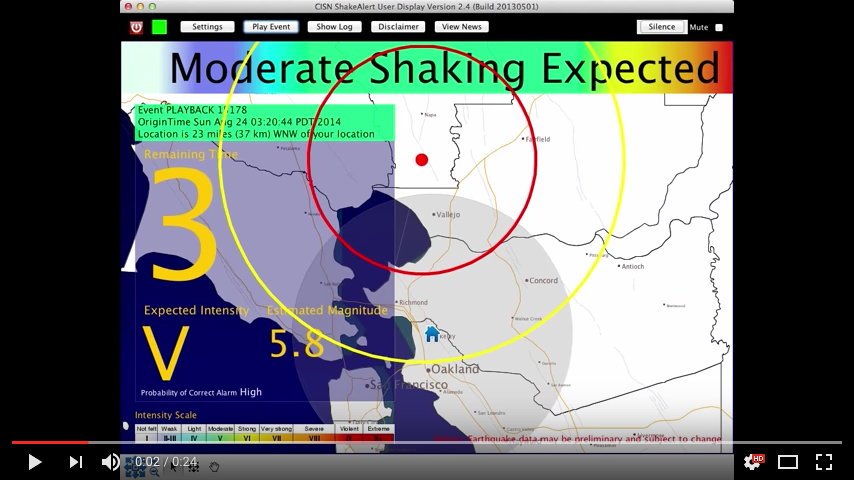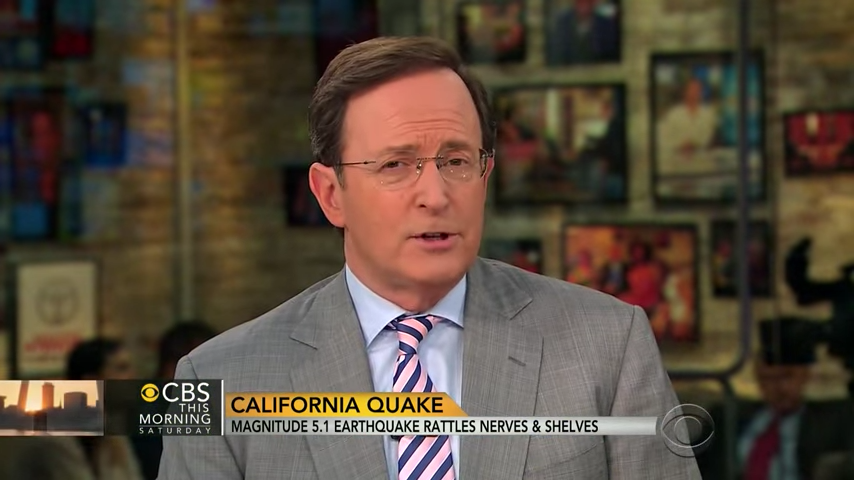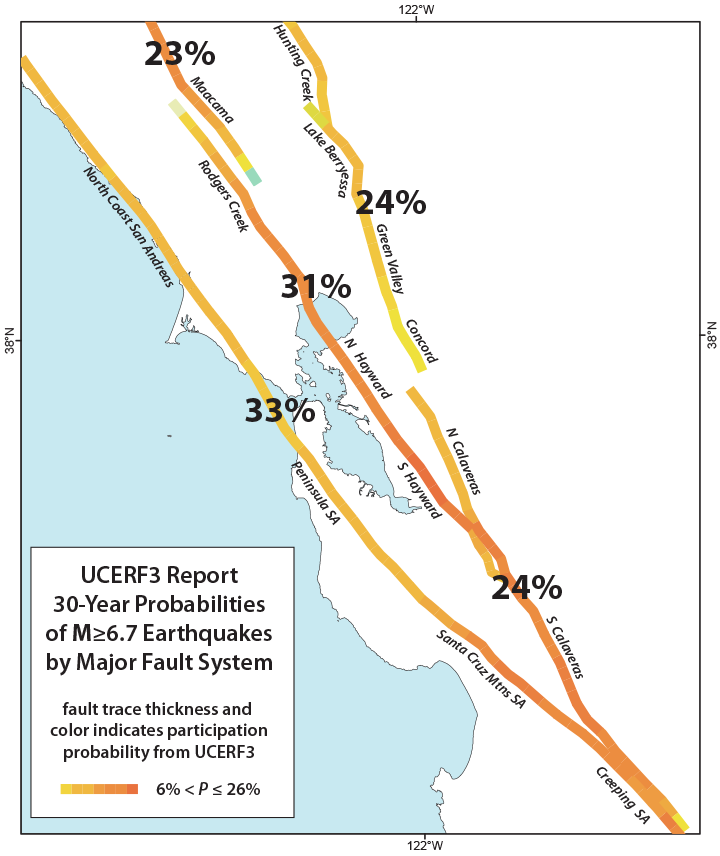E-larmS: Berkeley's Earthquake Early Warning Algorithm
What is ElarmS?
ElarmS is a robust earthquake early warning algorithm that has successfully alerted on hundreds of events throughout California since it was developed in 2007. It was one of the original three algorithms providing estimates for the ShakeAlert® earthquake early warning system. ElarmS core features continue to be used in the sole point source algorithm for the production version of ShakeAlert (see Optimizing Earthquake Early Warning Performance: ElarmS‐3 by Chung, Henson, and Allen for more information on the current ElarmS 3 algorithm). Versions of ElarmS are being tested in countries around the world, including Israel, Turkey, Greece, South Korea, and Chile. ElarmS is one of the fastest earthquake algorithms running in the world, so fast it even sent out an alert for an earthquake before the damaging S-waves arrived at the surface!
What is Epic?
EPIC is a slightly modified version of ElarmS adapted for use by the ShakeAlert production system. With the transition from ElarmS to EPIC within the ShakeAlert system, a distributed model of software maintenance has been enabled and the Berkeley team very much appreciated the contributions of the other ShakeAlert partner institutions.
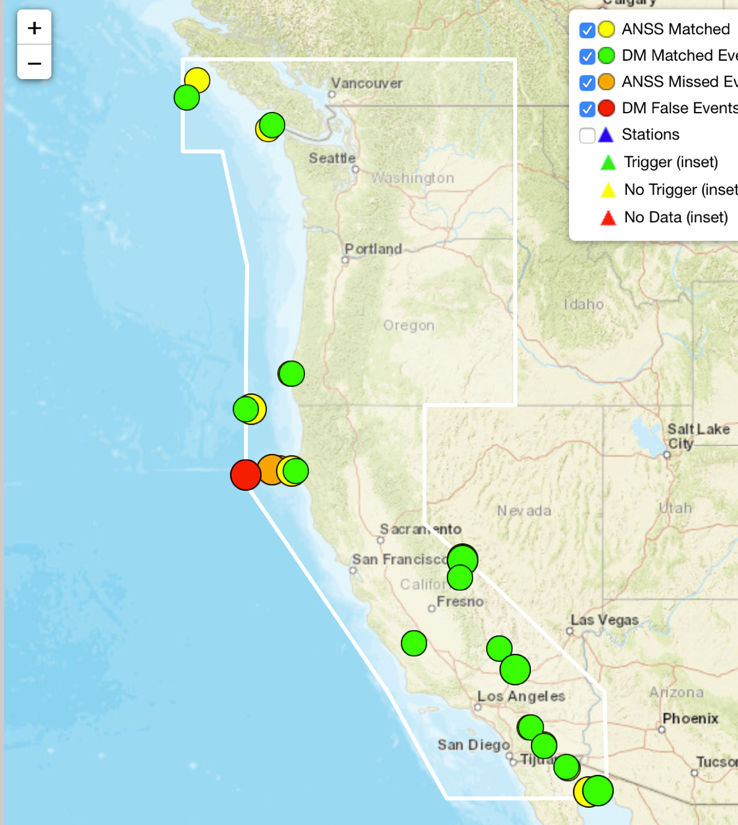
Figure 1. EPIC alerts for M>4.5+ earthquakes from 2019-10-19 through 2020-05-13. Green dots are EPIC estimated locations of the earthquakes.
Since EEW launched publicly on October 19th, 2019, EPIC detected 15 alerts for M4.5 or greater earthquakes on the West Coast of the US. One false alert can be seen very far offshore, but it was so far outside the network that no users were alerted through phones. EPIC also missed 3 offshore events. These offshore events past the edges of what we can detect are challenging scientifically, and thankfully have not resulted in any erroneous alerting to people using the public system.
How Does ElarmS work?
ElarmS is a network-based earthquake early warning algorithm. This means that it does not calculate based on single station data, but rather requires a network of at least 4 stations to report P-wave arrivals before it can issue an alert. Though we are experimenting with novel devices and methodologies to reduce the number of stations needed, we’ve found that 4 is a good number of stations to create robust alerts.
What Can We Do with Earthquake Early Warning?
The most important thing to remember when you hear an earthquake alert is to: Drop, Cover, and Hold On. In October 2019, ElarmS/EPIC began producing public alerts for the ShakeAlert system in California through the Wireless Emergency Alert System and various smartphone apps including UC Berkeley’s own MyShake app. Earthquake early warning is an incredibly useful tool that may one day be used to provide alerts of imminent earthquakes to people throughout the West Coast. Though warning times range from zero, to a few seconds, to tens of seconds, the warnings provided could be used to slow down high-speed trains, provide warnings people working in precarious conditions (for example, surgeons, construction workers, and those working with dangerous equipment and/or chemicals), and possibly trigger automatic shutdown of critical equipment. These warnings can also be used by the general public to give them time to take cover under a table and move away from unsafe situations (for example, large glass windows). Public alerting is now live in California, but is being tested throughout the West Coast with our partners.
July 4, 2019 M6.4 and M7.1 Ridgecrest earthquakes: Lessons learned.
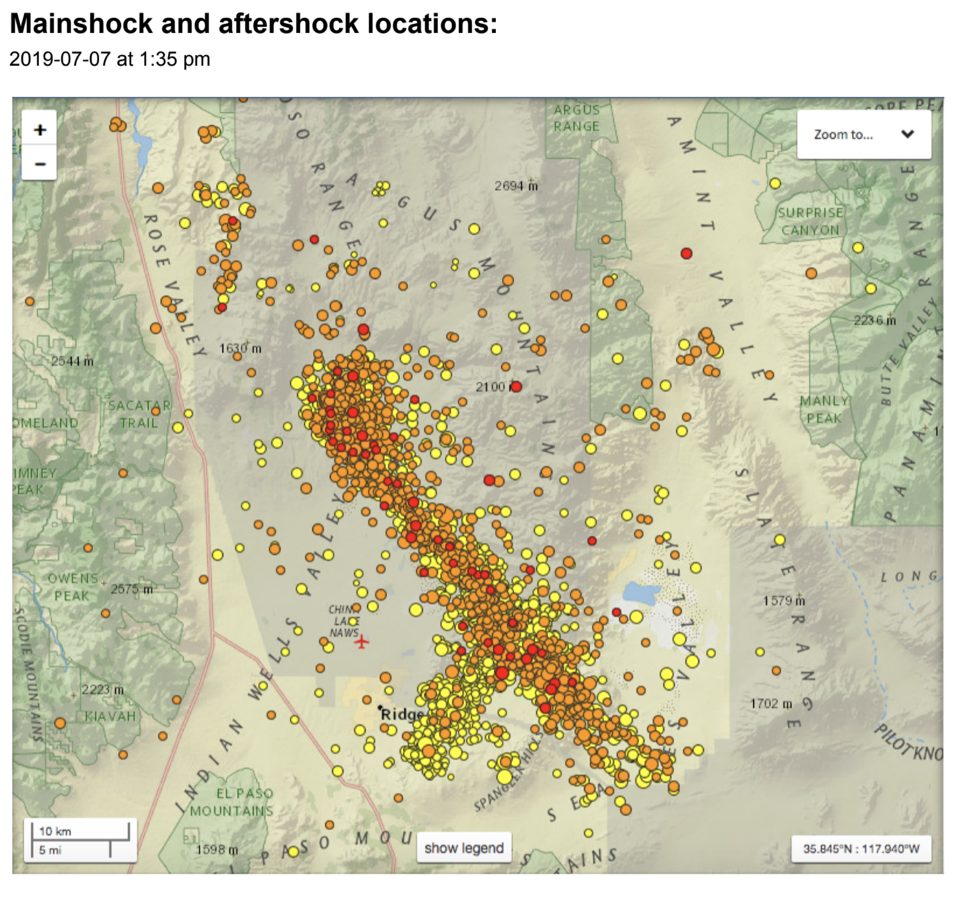
Mainshock and aftershock locations shortly after the magnitude 7.1 event, exhibiting a distinctive "T" pattern created by two perpendicular fault zones. The magnitude 6.4 event ruptured along the NE-SW trending fault, and the subsequent magnitude 7.1 event ruptured along the NW-SE trending fault. (From the USGS website for the Ridgecrest quake.)
Mainshock and aftershock locations shortly after the magnitude 7.1 event, exhibited a distinctive "T" pattern created by two perpendicular fault zones. The magnitude 6.4 event ruptured along the NE-SW trending fault, and the subsequent magnitude 7.1 event ruptured along the NW-SE trending fault. (From the USGS website for the Ridgecrest quake.) An alert was issued for the July 5, 2019 M7.1 event 8.0 s after the earthquake origin time. BSL’s EPIC algorithm was the first to report. Information from the FinDer algorithm updated results shortly thereafter, and both agreed on a final magnitude estimate of M6.3. Shaking was widely felt throughout California, including light to moderate ground shaking in Los Angeles, weak shaking in the San Francisco Bay Area, and felt shaking extending at least as far east as Phoenix and as far north as Sacramento.
NBC Universal was the only pilot in Southern California that generated an automated messaged over their hand held radios. USC received the alert over the UserDisplay, a computer based java applet, and used that information to manually alert over their radios. An alert was not issued via the ShakeAlertLA app to Los Angeles users because the estimated intensity (light shaking) was below the required threshold (damaging shaking) to alert. Many Angelinos would have liked to get a warning for the lighter level of experienced shaking. This prompted the USGS to reassess and ultimately lower the warning threshold for smartphone apps.
August 24, 2014
M6.0 South Napa Earthquake:
The above is a video capture of the warning received at the UC Berkeley Seismological Laboratory. It shows the 5 second countdown to the beginning of shaking in Berkeley and the expected shaking intensity in Berkeley which was 4 (shown IV) on the intensity scale and described as "light" shaking. The strongest shaking in Berkeley occurred 10 seconds after the alert was received.
Warning time: The amount of warning time depends on the distance of the user from the epicenter of the quake; the greater the distance, the greater the warning time. For the Napa quake Berkeley got 5 sec warning before the S-wave arrival, our users in San Francisco got 8 sec warning.
User actions: Our beta-testers across the San Francisco Bay Area received the alert at the same time as the Berkeley Seismo Lab. BART implemented an automated train-stopping system. The system activated and would have stopped trains, however, at 3:20 in the morning there were no trains running. The alert was received in the 911 center in San Francisco and by the UC Police.
March 28, 2014
M5.1 La Habra Earthquake:
ElarmS provided the alert for the M5.1 La Habra quake, the M4.4 Encino quake beneath the Santa Monica mountains (March 17, 2014), and the M4.2 Westwood quake (June 2, 2014), all in the Los Angeles region.
The above video shows a press conference at Caltech following the La Habra quake. During the press conference ShakeAlert issues a warning for a small aftershock that is caught on camera.
Earthquake Early Warning
BSL: Recent News Stories
Seismo Blog Posts About Earthquake Early Warning
- Alerts for the Whole West Coast
- Extremely Useful – But Not a Perfect System
- Earthquake Early Warning is Finally Here
- It Worked ... and It Did Not!
- Temblors and Politics
- Earthquakes, High Tech and Tinkerers
- What Mexico Has, California Is Lacking
- Shaken But Not Stirred
- Shaking Expected in 30 Seconds
- Slow Trains and Earthquakes
